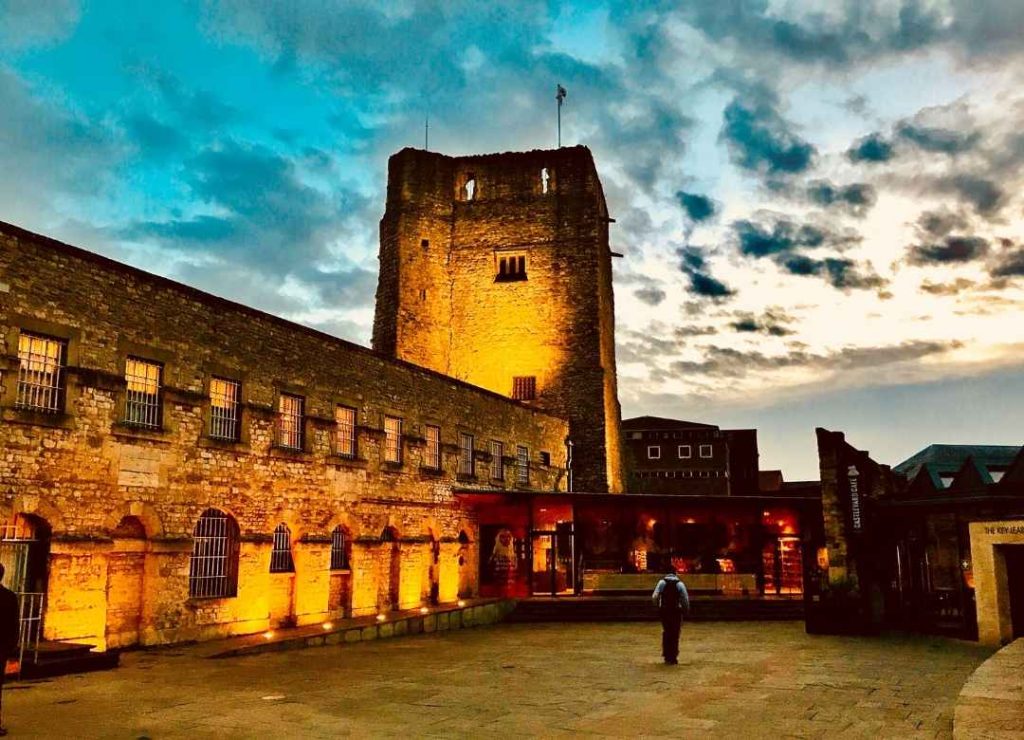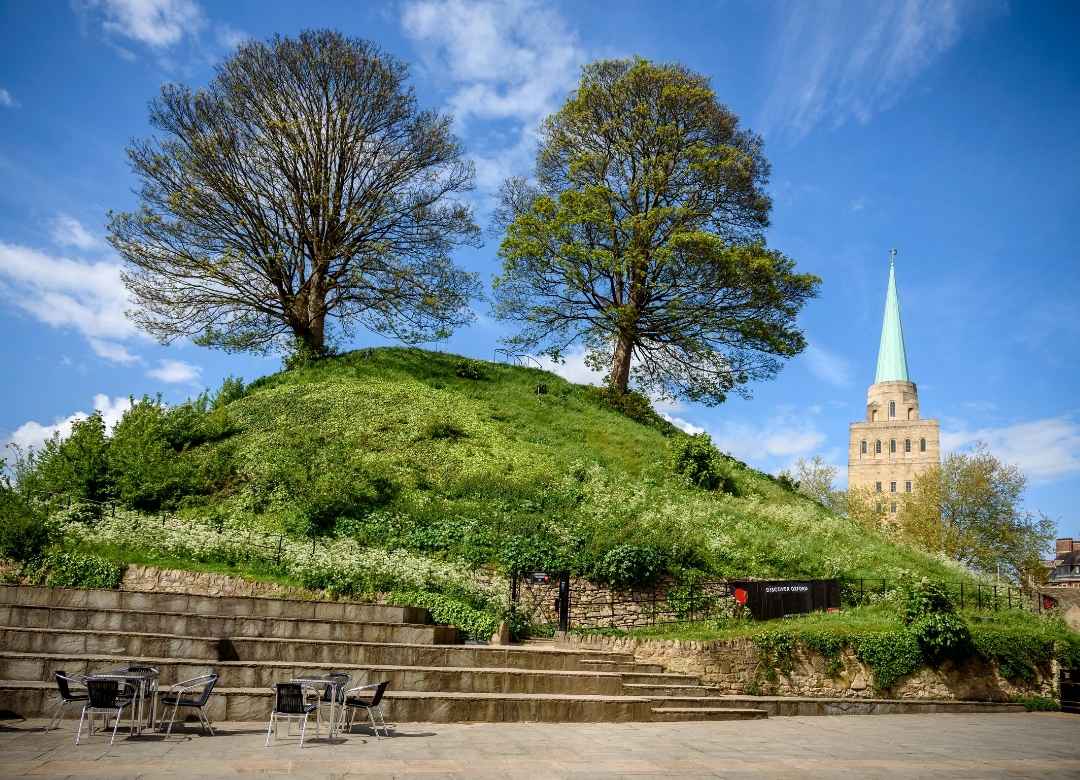Destinations
Oxford Castle – The Saxon Town Walls and the legendary prison
Oxford Castle – The Saxon Town Walls and the legendary prison
Explore a thousand years of history and legend at Oxford Castle and Prison
Experience British heritage and take a tour as one of the many characters from its long past!
Oxford Castle is a one-of-a-kind historical site in the UK
Oxford was transformed into a burh (fortified town) in the late ninth or early tenth century AD.
By the eleventh century, the burh had four gates, each guarded by a great stone-built structure known as St George’s Tower.
The 900-year-old underground Crypt, the only surviving remains of St. George’s Chapel, where it is said that Oxford’s famed education began; the 11th-century motte and bailey castle Mound with the vaulted well chamber; and St George’s Tower, a 17-story tower with a view of the city. Stations for trains and buses are within walking distance.
Why is Oxford Castle so legendary?
Oxford was selected as a vital location following the Norman invasion. As a result, William I awarded it to one of his main allies, Robert d’Oilly, who erected an earth and timber motte-and-bailey fortress about 1071.
Smartly, the bailey defences included the existing stone-built St George’s Tower. Even the River Thames was diverted to create a flooded moat.
Robert also established St George’s Chapel within the castle’s bailey, which may have replaced an older Saxon church.
In 1135, Henry I died without leaving a male successor, and England fell into civil conflict over the English succession, known as the Anarchy.
Following the death of the old King, his nephew, Stephen of Blois, ascended to the throne, but he was challenged by Henry’s daughter, Matilda.
Who lived in Oxford Castle?
By 1142, each party had established its own geographical area of power, and Oxford was on the dividing line between them. Stephen made a surprise attack on Oxford in 1142, besieging the castle and capturing Matilda within.
She did, however, make a brave and successful effort for freedom when she sneaked out of the castle in the dead of winter, wrapped in a white clock to blend in with the snow-covered countryside.
Oxford succumbed the next day after fleeing to neighboring Wallingford Castle. William de Chesney was named as the next Constable.
The conflict ended in 1153.
With an agreement, Stephen would rule for the rest of his life, followed by Matilda’s son, Henry. He gave the castle to Roger de Lucy.
During the late twelfth/early thirteenth centuries, Oxford Castle was substantially renovated.
The best way to get an insight into life in medieval England!
The castle has served as both royalty’s home & court for centuries
In June 1646, the town’s defences and the castle’s medieval walls were scorned to prevent further military usage. However, due to its service as Oxford’s jail, only St George’s Tower remained intact.
Oxford Castle’s destroyed structure was still utilized as a county jail for Oxfordshire and Berkshire. Her Majesty’s Prison Oxford occupied the majority of the castle until 1996, when it was decommissioned.
These ancient walls saw it all.
In 1226, Henry III authorized to improve them, and thirty-four landowners were required to contribute materially to the construction. When they disagreed, part of their stuff was taken away.
The improvements included strengthening the (existing) stone wall and constructing about thirty D-shaped bastions to supplement it.
A deep ditch also fronted the defences, which were supplemented, at least on the north-eastern side, by an external perimeter that provided a circular series of defences.
Eventually, by the late fourteenth century, both the castle and the town wall’s defences had been disregarded and abandoned.
Visit the legendary prison with us. It’s more exciting than you think.
Coming soon: Be a Victorian Prisoner!
There are now guided tours of the ancient prison buildings, as well as open courtyards for market events and dramatic performances, in the restored Oxford Prison complex.
Among the buildings is the Malmaison Oxford, a hotel of the Malmaison brand that occupies a major portion of the old jail blocks, with cells transformed into guest rooms.
To the contrary, those parts of the jail that were linked with corporal or death sentences have been transformed into offices rather than being used for visitors to stay…
Is Oxford Castle worth visiting?
Oxford Castle is still today rate on Tripadvisor the 6th out of 166 things to do in Oxford
Oxford Castle Highlights
- 11th-century castle motte
- Late Saxon stone tower
- Norman chapel crypt
- 17th-19th century prison
- Section of the Saxon city walls
What was Oxford Castle used for?
Oxford Castle is an important landmark in English history. It was built over Saxon fortifications, saw action during the Anarchy where Matilda escaped Stephen amidst a snowstorm, and served as Royal capital throughout Civil War. T
oday it’s used for entertainment purposes like concerts or weddings etc., but also helps to educate visitors about its rich past by hosting exhibitions on notable events that took place there, such as “Prison Life at Oxfordshire County Gaol” (1880-1948)
Oxford Castle has seen many significant historic moments, including when King Stephen tried unsuccessfully to capture Matilda, who later became Empress of Holy Roman Empire; acted as a royal capital city through civil war; hosted various prison exhibits from 1880 – 1948, which are now displayed inside castle walls.
Visit britainscastles.com for more info.
Tours of oxford castle and prison
Oxford Castle’s secrets have been revealed, including instances of brutality, executions, amazing escapes, betrayal, and even romance.
Walkthrough these historic structures and hear the stories that tie actual people to these events.
GUIDED TOUR PRICES:
- Adult £14.45
- Child (5-15) £9.45
- Child (under 5) FREE
- Student (with valid ID) £13.45
- Senior (60+) £13.45
- Carer FREE
OPENING DATES AND OPENING HOURS
Monday to Thursday the first tour starts at 10am.
The last tour starts at 5 pm.
(Tours every 25 minutes)
Friday to Sunday the first tour is at 10 am.
The last tour 5 pm
(Tours every 20 minutes)
Find out more about its history with our guides, but be warned, the tours always end at the prison cells where you can take part in some traditional punishments of yesteryear.




